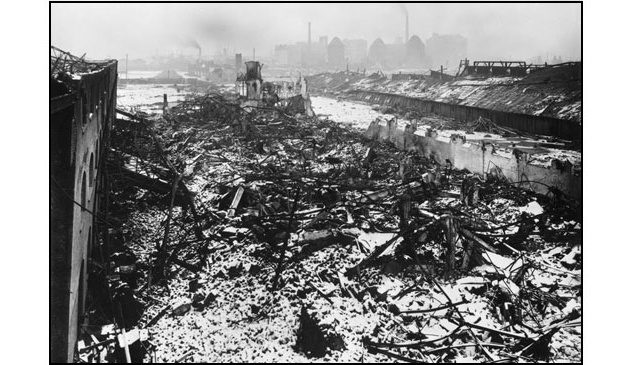In brief – Early-20th century London

County Hall, offices of the London County Council, opened in 1922 on the south side of Westminster Bridge. At that time it was unfinished, hence its lack of symmetry in this photograph. It was built on the site of the earlier Metropolitan Board of Works offices and various wharves and factories. It served as the headquarters of local London government until 1986.
When American Dr. Hawley Crippen murdered his overbearing wife at their house at Holloway he attempted to escape by ship to Montreal, with his lover dressed as a boy. During the voyage the ship’s captain heard of the case, became suspicious of the pair and telegraphed back to London. A police officer boarded a faster ship, catching up and arresting Crippen before he could reach Canada. Brought back to London, Crippen was hanged at Pentonville.
In 1908 the huge Franco-British Exhibition, celebrating the Entente Cordiale, was held on a 140 acre site at Wood Lane, attracting eight million visitors. It consisted of numerous white stuccoed buildings and the area became known as White City. With fun fairs, bandstands, a lake and rides, White City continued as a general attraction. Until the 1930s Earls Court was a pleasure park where funfairs were held. In 1937 an exhibition hall was built on the site to rival nearby Olympia.
As the British Empire reached its largest extent the British Empire Exhibition was held at Wembley, opening in 1924. Each of fifty-six British colonies had their own pavilion and other exhibits celebrated the arts, engineering and the work of the British government. It included a forty-acre amusement park and its own railway. One of the most popular exhibits was the newly discovered treasures from Tutankhamen’s tomb. A lasting legacy of the event was Wembley Stadium, which had been built to coincide with it but opened the previous year for the 1923 FA Cup Final.
The recent invention of radio became more widespread. The British Broadcasting Company (as it was originally named) was founded in 1922, making its first broadcast in November that year. As it expanded it required purpose-built studios and a site was found beside All Soul’s church at Portland Place. The BBC made its first television broadcast from Alexandra Palace in 1936. The coronation procession of George VI was televised in 1937 as was the Wimbledon tennis final of the same year. In 1949 the decision was taken to build television studios at White City.
In the first decades of the century the working week was cut to five days, giving workers an extra day of leisure. Until the second half of the 20th century the majority of Londoners, many of whom lived in a confined space of two rooms, spent little time at home. Children played in the street, young adults paraded in certain areas during the evenings, and adults might spend their time in the pub. Music halls quickly went out of fashion as cinemas, dancehalls and sports events became popular. There was also an increasing number of concert halls. The West End thronged with people on most nights, particularly around Leicester Square and Piccadilly Circus.
By 1932 there were almost 260 cinemas in the London area and by the end of that decade there was at least one in virtually every suburb. Attendances rose steadily, reaching a peak in 1946, and palatial and exotic new venues were built around London, such as the Gaumont State at Kilburn, Brixton Astoria, Finsbury Park Astoria and the Tocadero at Elephant & Castle. By the 1930s almost all young people were visiting a cinema at least once and often on multiple occasions each week and that remained the case until the 1950s. National chains of cinemas were established, notably Oscar Deutsch’s Odeons and Associated British Cinema’s ABCs. Film studios were established at Hackney, Ealing and Elstree.


